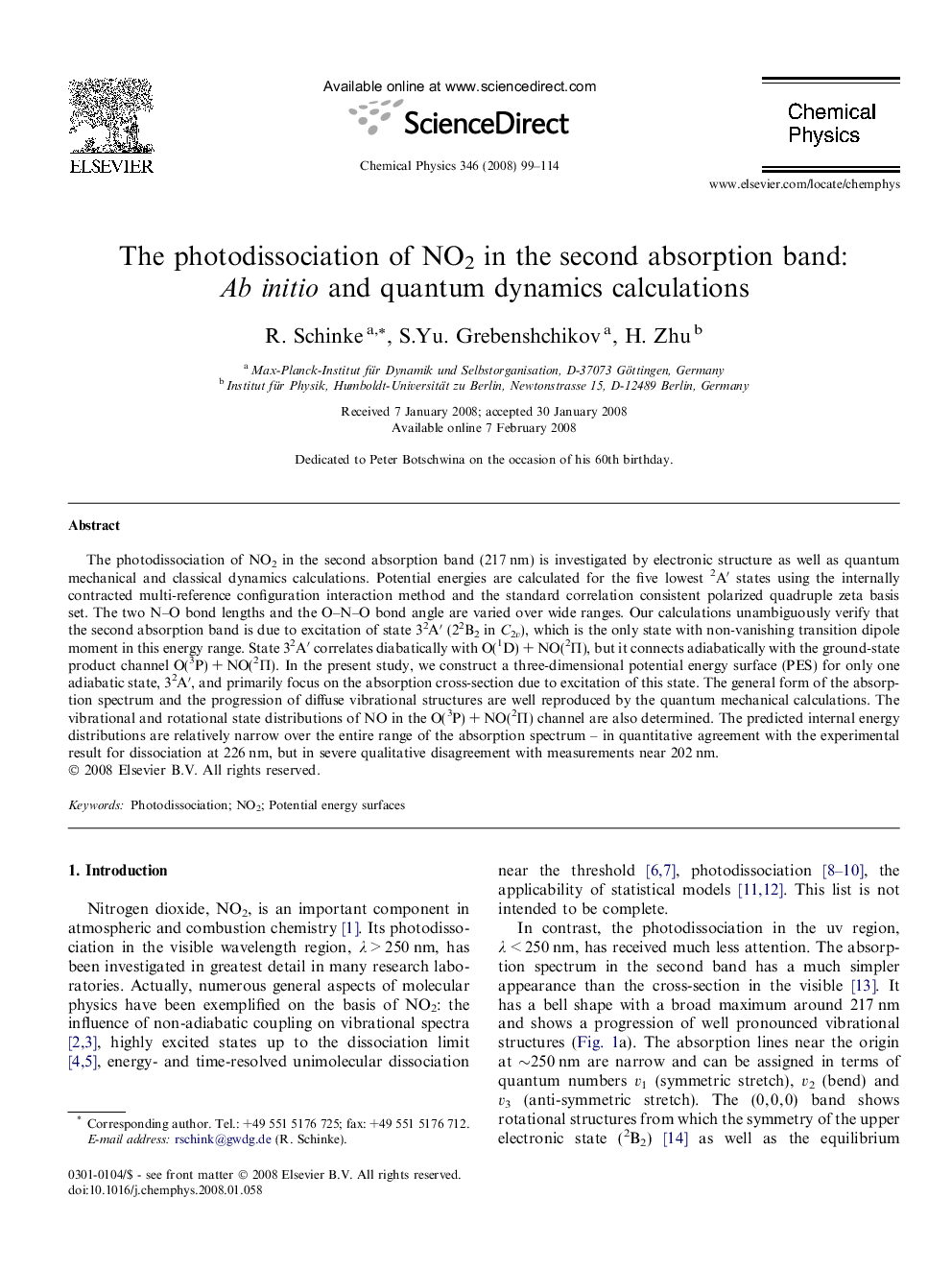| Article ID | Journal | Published Year | Pages | File Type |
|---|---|---|---|---|
| 5376055 | Chemical Physics | 2008 | 16 Pages |
Abstract
The photodissociation of NO2 in the second absorption band (217Â nm) is investigated by electronic structure as well as quantum mechanical and classical dynamics calculations. Potential energies are calculated for the five lowest 2Aâ² states using the internally contracted multi-reference configuration interaction method and the standard correlation consistent polarized quadruple zeta basis set. The two N-O bond lengths and the O-N-O bond angle are varied over wide ranges. Our calculations unambiguously verify that the second absorption band is due to excitation of state 32Aâ² (22B2 in C2v), which is the only state with non-vanishing transition dipole moment in this energy range. State 32Aâ² correlates diabatically with O(1D)Â +Â NO(2Î ), but it connects adiabatically with the ground-state product channel O(3P)Â +Â NO(2Î ). In the present study, we construct a three-dimensional potential energy surface (PES) for only one adiabatic state, 32Aâ², and primarily focus on the absorption cross-section due to excitation of this state. The general form of the absorption spectrum and the progression of diffuse vibrational structures are well reproduced by the quantum mechanical calculations. The vibrational and rotational state distributions of NO in the O(3P)Â +Â NO(2Î ) channel are also determined. The predicted internal energy distributions are relatively narrow over the entire range of the absorption spectrum - in quantitative agreement with the experimental result for dissociation at 226Â nm, but in severe qualitative disagreement with measurements near 202Â nm.
Related Topics
Physical Sciences and Engineering
Chemistry
Physical and Theoretical Chemistry
Authors
R. Schinke, S.Yu. Grebenshchikov, H. Zhu,
